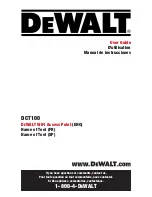
Wireless E911 Guide
CG-EWCG-001
BellSouth Wireless E9–1–1/SS7 Interconnection
Guide
Issue 3, January 6, 2004
NENA (National Emergency Number Association) has published a Technical Information Document:
"NENA 05-501 Technical Information Document on SS7 Guidelines for MSC to Selective Router
Connectivity." (available at: http://www.nena9-1-1.org/9-1-1TechStandards/tech_info_docs.htm ). That
document identifies many of the possible call setup parameter options that can occur within the enhanced
9-1-1 network on an SS7/ISUP trunk between a Wireless Service Provider’s MSC and an Enhanced 9-1-1
selective router. The use of SS7 signaling greatly reduces post dial delay and also provides more reliable
ANI delivery when compared to traditional MF signaling. (Throughout this document the term SS7
is to be construed to mean SS7/ISUP signaling.)
As a high level statement, the intent of this BellSouth Wireless E9-1-1/SS7 Interconnection Guide is to list
the call setup parameters shown in the NENA 05-501 TID that are supported by BellSouth, so wireless
carriers can chose the one(s) that best meet their needs.
This documentation will identify, to the Wireless Service Provider, the parameters they need to populate
in their 9-1-1 Signaling System #7 Initial Address Message (SS7 IAM) to provide Phase 1 or Phase 2
E9-1-1 service to their customers.
NOTE: Wireless service providers who desire to take advantage of the SS7 signaling format for E9-1-1
service should contact their BellSouth Account Representative to begin a test and installation plan or to
discuss technical information.
This document identifies only SS7 signaling options supported for E9-1-1 trunk interconnection. SS7
interconnection for E9-1-1 is a service choice made by the wireless carrier, and does not limit, reduce, or
eliminate the current option to deliver E9-1-1 calls to BellSouth using traditional CAMA-MF or FG-D
signaling protocols.
A.2.1
Identified Options:
Section 4 of the NENA 05-501 document describes the various combinations of the call setup parameters.
Three Call Signaling Scenarios representing the four common Wireless E9-1-1 Solutions defined in
Section 3 of the NENA 05-501 TID are as follows:
•
Call Signaling Scenario (1) ESRK delivery
•
Call Scenario 2, CBN and ESRD Delivery - WITHOUT a hybrid
•
Call Scenario 2, CBN and ESRD Delivery - WITH a hybrid
•
Call Signaling Scenario (3) CBN, ESRD, and GLP (Geodetic Location Parameter) delivery
NOTE:This BellSouth document further clarifies those NENA 05-501 descriptions by distinguishing
between Call Signaling Scenario (2) CBN and ESRD Delivery without a hybrid architecture at the SR; and
Call Signaling Scenario (2) CBN and ESRD Delivery WITH a hybrid architecture at the SR. The NENA
05-501 authors elected to allow companies (like BellSouth) who offer a hybrid solution to define their
hybrid solution in their own documents. This document does that for BellSouth’s hybrid offering.
A.2.1.1
Call Scenario 1, ESRK Delivery
BellSouth supports the following options as listed in table 4-1 (ESRK Delivery) in "NENA 05-501
Technical Information Document on SS7 Guidelines for MSC to Selective Router Connectivity":
Page 76
Содержание E911
Страница 1: ...Customer Guide CG EWCG 001 Issue 3 January 6 2004 Wireless E911 Guide...
Страница 10: ...Wireless E911 Guide CG EWCG 001 Introduction Revision History Issue 3 January 6 2004 Page 10...
Страница 24: ...Wireless E911 Guide CG EWCG 001 Issue 3 January 6 2004 Page 14 Blank...
Страница 32: ...Wireless E911 Guide CG EWCG 001 Issue 3 January 6 2004 Page 22 Blank...
Страница 78: ...Wireless E911 Guide CG EWCG 001 Issue 3 January 6 2004 Page 68 Blank...
Страница 82: ...Wireless E911 Guide CG EWCG 001 Issue 3 January 6 2004 Page 72 Blank...
Страница 84: ...Wireless E911 Guide CG EWCG 001 Issue 3 January 6 2004 Page 74 Blank...
















































